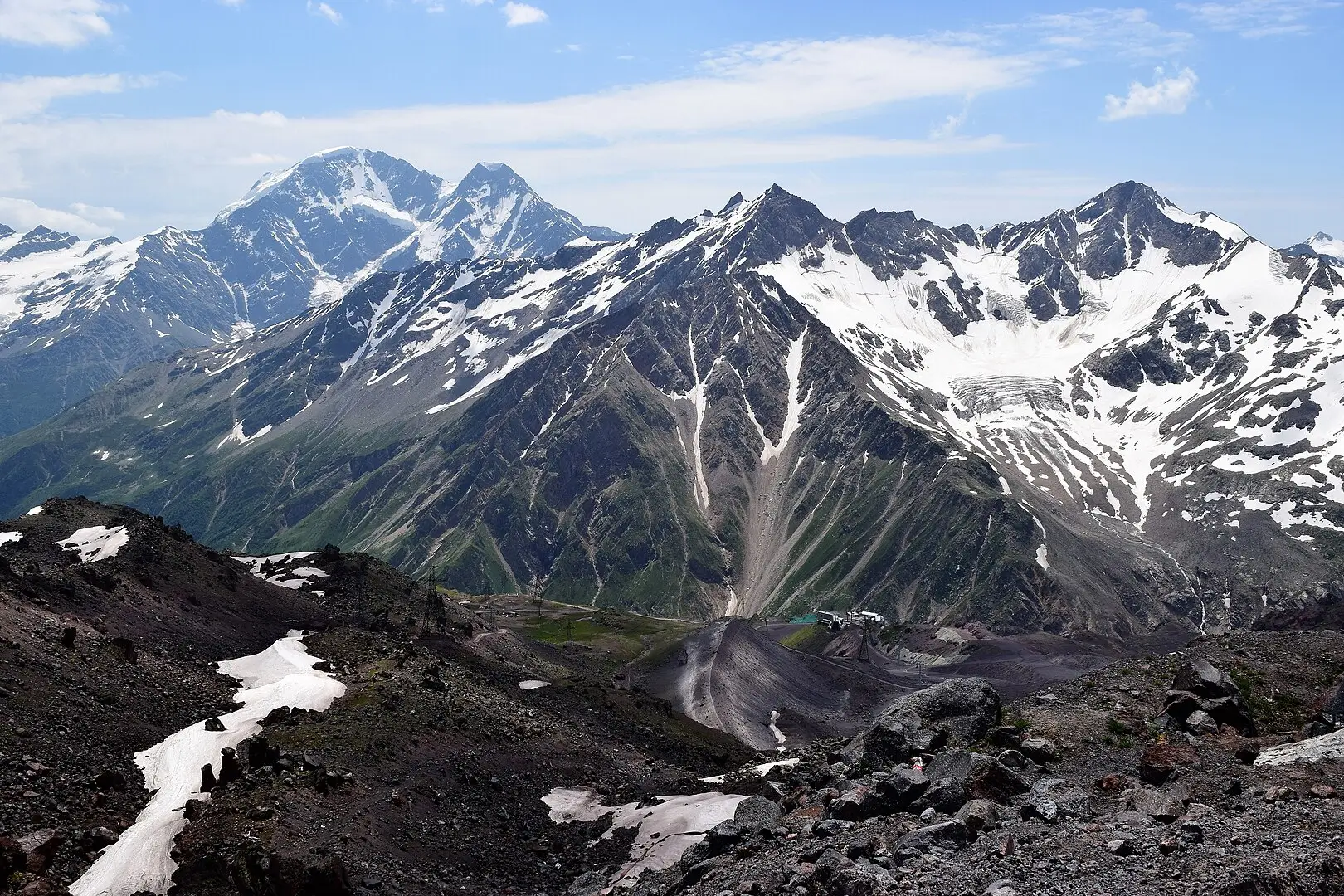2025 Caucasus Climbing Risks: Elbrus & Kazbek Alert
The summer climbing season in the Caucasus is in full swing, and for many mountaineers, the twin giants – Mount Elbrus and Mount Kazbek – are irresistible. But this year, local guides and rescue teams are raising red flags: conditions are shifting, and the hazards are real.
In the high camps, the stories are already circulating – about crevasses opening where last year there was solid snow, about rockfall rattling down slopes that have been stable for seasons. Whether you’re chasing the Seven Summits with Elbrus or testing your alpine endurance on Kazbek, this summer’s climbs demand a sharper awareness than usual.

Mount Elbrus, view on the mountains from the station Mir (3500 m), Photo: Riadchikova
Table of contents
Mount Elbrus: Weather Whiplash and Glacier Surprises
Mount Kazbek: Rockfall & Route Changes
Why This Season Is Different
Safety First – Without Losing the Adventure
Mount Elbrus: Weather Whiplash and Glacier Surprises
At 5,642 meters, Elbrus may be famed as the “easiest” of the Seven Summits technically, but summer 2025 is proving that no giant is truly tame.
- Rapid weather swings – Clear mornings are giving way to sudden whiteouts by early afternoon. Climbers caught high on the slopes are struggling with disorientation and navigation errors.
- Glacier instability – Warmer-than-average temperatures have softened the snow bridges over crevasses on the standard routes. Rescue teams have already responded to several incidents.
- High winds above the Saddle -Gusts over 70 km/h are forecasted more frequently, making summit pushes riskier.
Guides are urging teams to start earlier than usual, carry precise GPS backups, and avoid lingering at the Saddle when storms are brewing.
Mount Kazbek: Rockfall & Route Changes
Over on Kazbek (5,033 meters), the hazards this season aren’t just in the weather – they’re in the mountain itself.
- Rockfall zones expanding – Sections of the approach from the Gergeti Glacier to the summit ridge have seen increased rock movement due to melting permafrost.
- Unstable seracs -Particularly on the northern glacier approaches, serac collapses have been spotted even in the early morning.
- Refuge overcrowding -The Meteo Station hut is busier than usual, meaning late arrivals may be forced to bivouac outside, adding exposure risk.
Guides are recommending alternative route timing to avoid peak rockfall hours and stricter glacier rope protocols, even on seemingly benign sections.
Why This Season Is Different
Climate patterns in the Caucasus have been shifting for years, but this summer’s combination of higher temperatures, unpredictable storms, and melting ice is accelerating hazard formation. For climbers, this means fewer “safe” windows and more need for fast decision-making on the mountain.
Safety First – Without Losing the Adventure
The beauty of Elbrus and Kazbek is timeless: sunrise breaking over endless ridges, the humbling silence above 5,000 meters, the cultural richness of the valleys below. But mountains don’t hand out free passes.
If you’re heading up this season:
- Hire experienced local guides who know current micro-conditions.
- Check updated forecasts daily – Caucasus weather apps can be more accurate than generic mountain weather sites.
- Be flexible with your summit plan – a one-day delay could save your life.
Climbers are right to dream of standing on these summits in 2025 – but this year, those dreams need to be backed by sharp preparation, local insight, and respect for a changing mountain environment.

